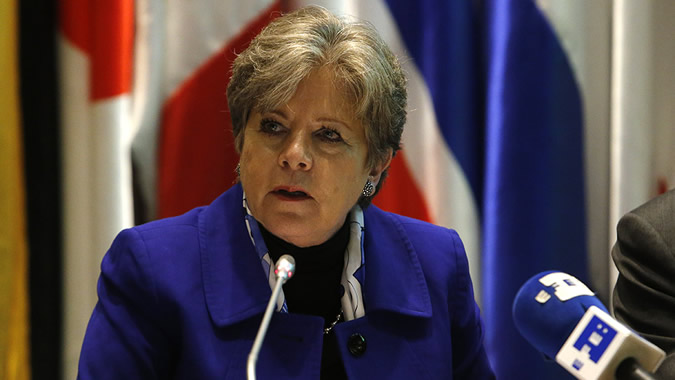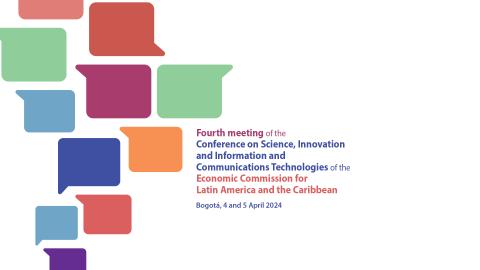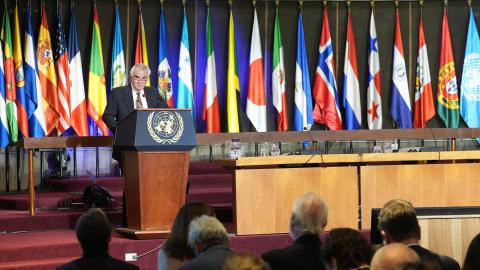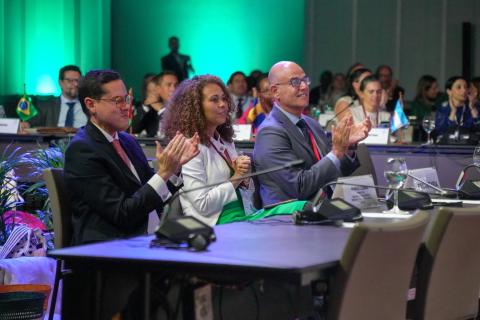Announcement
The flows of Foreign Direct Investment (FDI) into Latin America and the Caribbean shrank 7.9% in 2016 compared with 2015, totaling $167.043 billion dollars, which represents a 17% decline from the peak reached in 2011, the Economic Commission for Latin America and the Caribbean (ECLAC) revealed today at its headquarters in Santiago, Chile.
This outcome is due to low commodities prices and their impact on investments made in the natural resources sector, to slow growth in economic activity in various economies and to the global scenario of technological sophistication and an expanding digital economy that tends to concentrate transnational investment in developed economies, according to the annual report Foreign Direct Investment in Latin America and the Caribbean 2017, presented this Thursday at a press conference.
In 2016, Latin America and the Caribbean received 10% of global FDI, a similar share to 2015 but below the 14% average that had been achieved between 2011 and 2014. Despite this downward trend, FDI flows represent 3.6% of the region’s Gross Domestic Product (GDP), while the global average is 2.5%, which shows the relevance of these intakes for Latin American and Caribbean economies.
In 2017, ECLAC projects a fresh decline in FDI inflows, of around 5%.
“Foreign Direct Investment has been an important factor for the development of export activities that are key to the growth of Latin America and the Caribbean, as well as for the creation of new sectors. But the big productivity gaps that persist in the region and the new technological scenarios that the fourth industrial revolution poses require new policies to harness the benefits of FDI in national processes of sustainable development,” said Alicia Bárcena, ECLAC’s Executive Secretary.
Bárcena also called for paying close attention to the fact that in several countries of the region, capital outflows from FDI income surpassed inflows in the 2010-2016 period.
Despite the recession, Brazil experienced a 5.7% increase in its FDI inflows in 2016 and remained the main receiving country in the region ($78.929 billion dollars, equivalent to 47% of the total). In Mexico, which received $32.113 billion dollars and was the second-biggest recipient (19% of the total), FDI fell 7.9%, but stayed at high levels in historical terms.
Inflows into Colombia grew 15.9% to $13.593 billion dollars, positioning that country as the third-biggest economy for FDI intakes (8% of the total), above Chile, which absorbed $12.225 billion dollars of FDI (7%). Panama drew 44% of the funds coming into Central America, and Costa Rica 27%, while in the Caribbean the Dominican Republic received 49% of the subregion’s FDI and Jamaica 16%.
FDI aimed at the natural resources sector fell from 18% in 2010-2015 to 13% in 2016, in line with the end of the boom in commodities prices. In contrast, the weight of manufacturing and services rose to 40% and 47%, respectively.
The new investments announced were concentrated in renewable energy, telecommunications and the automotive industry. Renewable energy projects represented 18% of the total amount announced in 2016 (in 2005-2010 that figure was 6%), meaning this activity was the most dynamic in the time period, especially in Chile and Mexico.
With regard to the investing countries, the study indicates that they have not diversified: 73% of total FDI came from the United States (20%), which is the top individual investor, and the European Union (53%).
According to official statistics, China was responsible for just 1.1% of the FDI received by the region in 2016, a figure that likely underestimates the presence of Chinese capital in Latin American and Caribbean countries. In fact, if one observes the value of mergers and acquisitions in 2016, the Asian giant was the fourth-biggest source of investment. Given the major deals that China has made in the first half of 2017, it is to be expected that its share will increase next year, the document states.
The report also confirms that 2016 was a weak year for Latin American transnational companies, known as “translatinas.” FDI outflows from countries in Latin America and the Caribbean dropped 50% to total $24.609 billion dollars.
The document analyzes, as a success story under pressure, the evolution of a sector that has developed thanks to FDI income: Mexico’s automotive industry. “After the international financial crisis of 2008, this industry has experienced an accelerated process of transformation, going from being a low-cost platform for the assembly of low-end vehicles to being a more integrated and diversified productive chain in terms of products and technological sophistication,” ECLAC explains.
Currently, the Mexican automotive industry contributes more than 3% of GDP and 18% of the country’s manufacturing GDP, has a trade surplus topping $52 billion dollars a year, records accumulated FDI of more than $51.2 billion dollars since 1999 (11% of the total) and is responsible for around 900,000 direct jobs. Eighty percent of production goes to the export market, and 86% of these exports have Canada and the United States as their destination. In this way, Mexico has become the seventh global producer of vehicles and the world’s fourth-largest exporter.
According to ECLAC’s analysis, this Mexican industry’s future prospects will depend on the technological transformations promoted by the global automotive industry, changes in the concept of mobility and in consumption patterns, and regulatory pressure regarding security, the environment and energy efficiency. They will also be influenced by the climate of uncertainty caused by announcements made by the new Administration in the United States, the report concludes.



